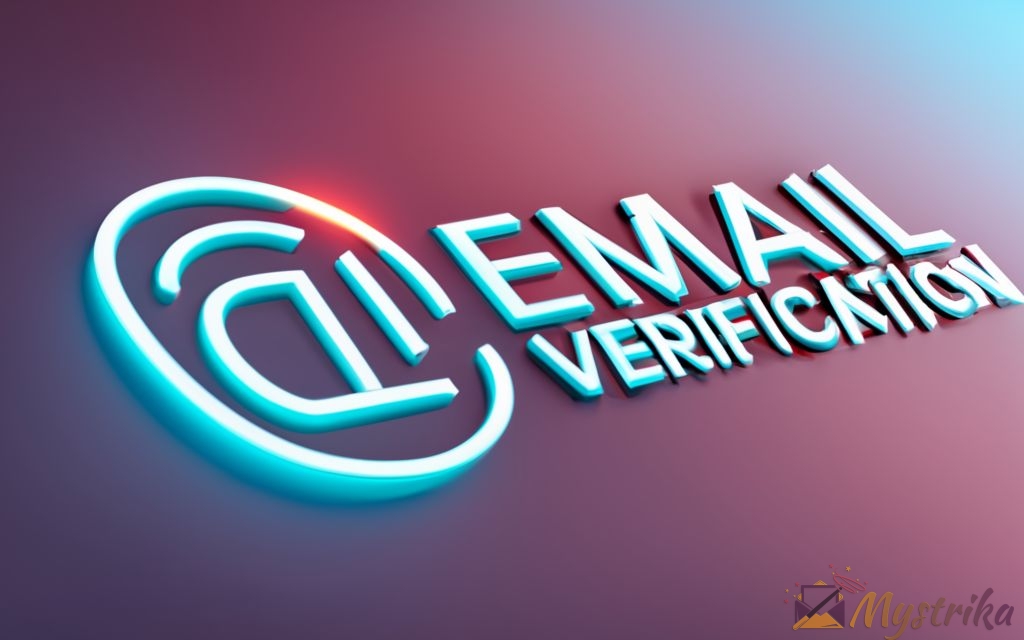Invalid email addresses can wreak havoc on your marketing campaigns. Before you press send on your next newsletter or outreach email, it’s essential to **verify** your contact list. But you don’t have to send test messages and risk damaging your sender reputation. This guide will explore simple techniques to **verify email addresses without sending** a single message. Follow these best practices to keep your email lists primed for stellar deliverability.
Understanding Email Verification vs. Confirmation
Email verification and confirmation may seem like interchangeable terms, but there are some key differences between the two processes. Understanding when to verify versus confirm email addresses can optimize your outreach and ensure you have an updated, deliverable contact list.
Defining Email Verification and Confirmation
Let’s break it down simply:
- Email verification is the process of checking if an email address is valid and set up to receive messages.
- Email confirmation goes a step further by verifying that a real person owns the email address.
Think of email verification as validating the mailbox itself exists. Confirmation then checks if someone actively uses that mailbox.
How Email Verification Works
There are a few common techniques used to verify the validity of an email address:
- Syntax checks: Verifying the email is formatted correctly (e.g. [email protected]).
- Ping tests: Sending a ping to the mail server to confirm it exists and accepts messages.
- DNS lookups: Checking the domain name system records for the email domain.
- Reverse email searches: Searching databases to see if the address appears.
- Blocklist checks: Checking an email against spam blacklists.
Email verification only tells you the email address itself passes validity tests. It doesn’t confirm someone actively uses or checks that mailbox.
Email Confirmation Provides Ownership Proof
To get proof that a real human actually owns an email, you need to confirm it. Here are some email confirmation techniques:
- Two-step verification: Sending a verification link or code to the address.
- Consent verification: Requiring the recipient to confirm they want to receive your emails.
- Manual verification: Personally contacting the email owner by other means.
- Activity tracking: Monitoring if the recipient opens your emails and clicks links.
Email confirmation gives you greater assurance that your messages will reach real people. But it often requires recipients to actively opt-in or respond.
Key Differences Between Verifying and Confirming
While related, verification and confirmation should not be used interchangeably. Here are the key differences:
Verification Checks Validity
The sole purpose of verifying an email is to check that the address itself is valid and set up properly to receive messages. Verification confirms the mailbox exists, without any other context.
Confirmation Checks Ownership
Confirming an email goes beyond technical validation to get proof that a person actively uses that address. It associates the mailbox with an actual recipient.
Verification Assesses Format, Server, DNS
Typical verification techniques look at the email’s format, ping the server, assess DNS records, and check against blacklists. The focus is on the address itself.
Confirmation Requires Opt-In or Response
To confirm an email, the recipient must respond in some way, either by opting in explicitly or responding to a verification request. The focus is on the human owner.
Verification Can Be Automated
Services exist to programmatically verify email lists, allowing developers to integrate email verification into their tools and workflows.
Confirmation Often Needs Manual Steps
While some confirmation can be automated, it often requires manual steps like personal outreach or reconciliation across channels.
Verification Is Often Invisible
Recipients may not be aware an email is going through verification processes, which happen behind-the-scenes.
Confirmation Is Visible to Recipients
The recipient is directly involved in email confirmation through opt-ins and responding to verification messages.
When to Verify vs. Confirm Email Addresses
Now that you know the difference, when should you use email verification compared to confirmation?
Verify for Large Marketing Emails
If you purchased a marketing list or scraped a large batch of emails for outreach, you will want to verify them first. Verification cleans the list of technically invalid addresses the campaign would never reach.
Confirm for Highly Targeted Outreach
If you have a shortlist of individuals you want to target, go beyond verification and get email confirmation. Knowing real humans are present shows greater care.
Verify Before Emailing Existing Contacts
For emailing your current contact database, run verification checks periodically to catch any outdated or misspelled addresses. But confirmation is less important for existing relationships.
Confirm for Highly Personalized Emails
If you are sending highly customized, segmented, or triggered emails, confirm the recipients to ensure relevancy. Avoid sending personalized content to nonexistent people.
Verify Sales Leads Regularly
For sales prospecting, verification should be done regularly as you encounter new leads. But confirmation may be unnecessary if you plan to call and qualify them anyway.
Confirm Recipients Who Requested Contact
If a lead specifically requested you email them, or signed up on your website, take the extra step to confirm you have the exact address they provided.
Understanding the nuances between verification and confirmation will help you build contact lists that are both valid and genuine, improving recipient experience and maximizing your deliverability. Take a targeted approach based on your specific outreach goals.
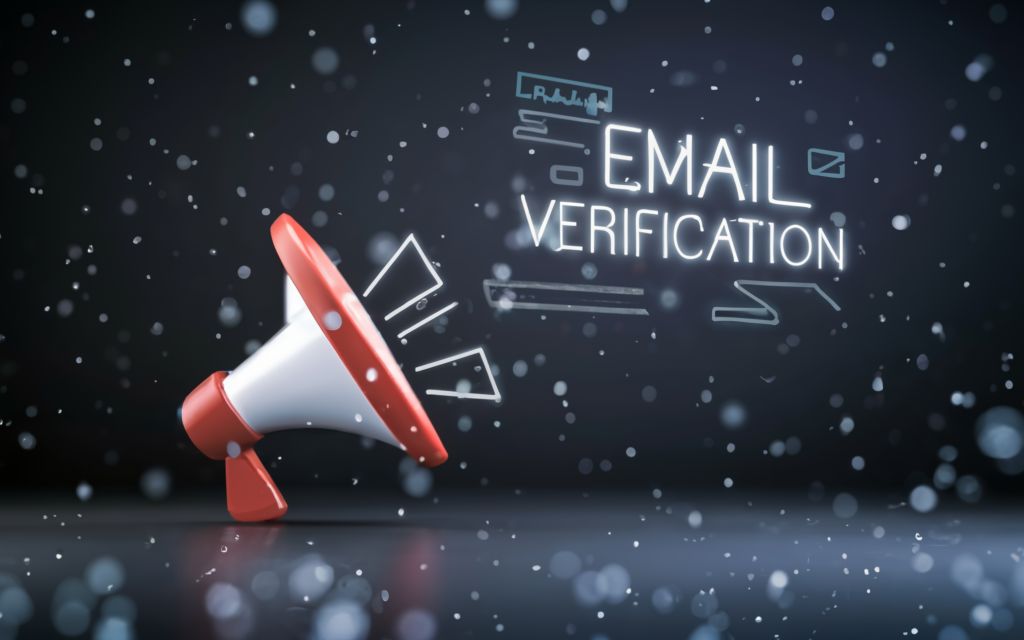
Why Verify Email Addresses Before Sending?
It may seem quicker and easier to hit “send” on an email campaign before verifying your contact list. But taking the extra time upfront to validate your recipients can significantly improve deliverability, sender reputation, and return on investment. Here are three key reasons to verify emails before pressing send.
Verification Improves Deliverability and Inbox Placement
The main goal of email verification is to confirm the technical validity of email addresses. By removing addresses that are misspelled, defunct, or otherwise incorrect, verification directly boosts your inbox placement rates.
Let’s dig into why validating contact info leads to better deliverability:
Eliminates Hard Bounces
Invalid email addresses that generate hard bounces are detrimental to your sender reputation. Verification strips these problematic contacts so hard bounces don’t happen.
Reduces Complaint Rates
Mistyped or abandoned email addresses often cause spam complaints if your email ends up in the wrong mailbox. Verifying contacts helps avoid this.
Improves Engagement Metrics
By only emailing genuine, active users, your open, clickthrough, and response rates will be higher since fake addresses aren’t dragging down your metrics.
Helps Email Service Providers Trust You
Email service providers use engagement metrics among other factors to determine your sender reputation. Higher engagement from verified emails builds trust.
Prevents Blocklisting
If too many recipients mark your messages as spam or file abuse complaints, email providers may blocklist your sending domain. Verification helps prevent this.
The higher percentage of verified, deliverable addresses you have, the better your email campaigns will perform. industry experts recommend keeping your email lists at least 95% verified.
Verification Helps Maintain Sender Reputation
Your domain and IP sender reputation is key for staying out of spam folders. Here’s how verifying email addresses protects your reputation:
Lowers Bounce Rate
High bounce rates damage your sender score. Verification removes inactive and invalid addresses, keeping bounce rates low. Industry best practice is less than 2%.
Reduces Spam Reports
Recipient spam complaints also hurt your sender reputation. Verification minimizes erroneous complaints from inactive or fake email accounts.
Limits Email Blocklisting
As mentioned earlier, aggressive blocklisting and blacklisting can occur if too many recipients flag your messages as spam. Verification helps avoid landing on blacklists.
Optimizes Engagement Factors
Engagement metrics like open, click, and reply rates factor into your sender score. Verification improves these by removing unmonitored accounts.
Builds Relationship with Providers
When email providers observe high engagement and low complaints from your verified contacts, you build a positive relationship over time.
Maintaining your sender reputation takes consistent effort, and regularly verifying your email lists is a foundational best practice.
Verification Saves Time and Money
Sending to unverified emails wastes resources. Verification provides an impressive return on investment:
Reduces Time Checking Invalid Addresses
Following up on undeliverable emails takes time. Verification automatically removes bad addresses from your outreach list.
Lowers Cost Per Valid Recipient
Email marketing services often charge per recipient. Removing invalid emails lowers your usable list size and cost per valid contact.
Increases Focus on Quality Outreach
Rather than chasing dead ends from fake email accounts, verification helps focus your time contacting genuine leads.
Maximizes Value of Personalized Emails
Sending customized one-to-one emails to inactive accounts diminishes their value. Verify contacts to get full value from personalization.
Prevents Wasted Spend Chasing Bad Data
Any costs associated with re-engaging or following up on fake email addresses is 100% waste. Verification eliminates this.
Take the time to verify your email lists, and you’ll reap significant dividends from increased deliverability, an improved sender reputation, and greater campaign efficiency. Verification pays off.
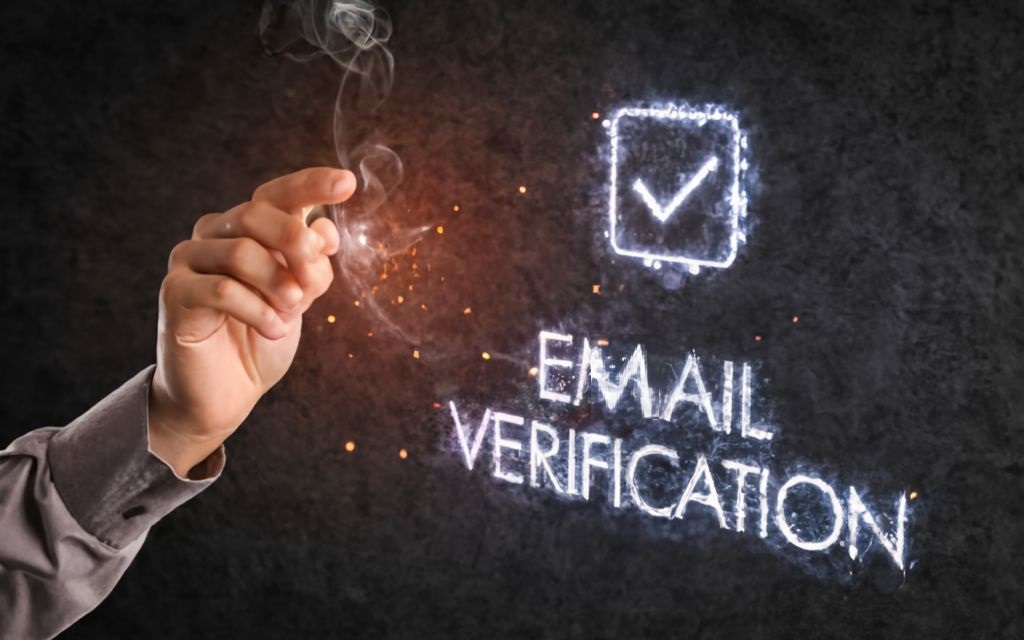
How to Verify an Email Address Without Sending
Sending test emails to confirm email addresses is time-consuming and strains your sender reputation. Luckily, there are techniques to thoroughly validate contacts without actually sending messages. Here are email verification methods to safely check your list.
Validate Email Address Syntax and Formatting
The most basic verification is assessing whether an email address structurally valid. Follow these tips:
Check for Common Typos
Scan for typos on common domains like missing letters (e.g. @gmil.com vs @gmail.com) or extra characters (e.g. @hotmaiil.com). These are dead giveaways of invalid addresses.
Confirm a Proper Format
Standard email format uses [email protected]. Be wary of addresses missing an @ symbol, domain, or using improper punctuation.
Watch for Suspicious Domains
If the domain name seems suspicious, look it up to confirm it’s registered and accepting mail. Avoid @domain.com emails with fake domains.
Validate Against Email RegEx
For developers, validate format using regex patterns. A basic email validation regex is:
/^([a-zA-Z0-9_\-\.]+)@([a-zA-Z0-9_\-\.]+)\.([a-zA-Z]{2,5})$/
This checks for a properly formatted local-part, domain, and top-level extension.
Check Length Limits
Per RFC specifications, the local-part before @ must be 64 characters or less. The domain can be 253 characters maximum.
Following email syntax and structure guidelines will catch some basic issues. But further verification is needed to fully confirm validity.
Validate the Email Address Domain
The domain portion of an email address provides clues about validity. Take these steps to check the domain:
Verify Domain Existence
Use online tools like MXtoolbox to verify the domain actually exists and is properly configured.
Check WHOIS Records
WHOIS lookups provide domain registration info like the registrar and lookup name servers. Active domains will have detailed records.
Search Domain on Public Databases
Trusted domain databases like Email-Checker.com help identify high-risk or fraudulent domains.
Assess Domain Trust Factors
Established domains with quality hosting and matching registration info are more trustworthy. New or odd domains warrant further verification.
Watch for Free Webmail Domains
Public domains like @gmail.com or @yahoo.com are valid but risk deliverability issues and low response rates. Use discretion when emailing free accounts.
Scrutinizing the sending domain provides clues about an address, but cannot fully confirm validity. Further verification is required.
Verify Email Addresses by Ping Testing Mail Servers
A common technique to validate inboxes is pinging the associated mail servers. Here is how to ping test email addresses:
Gather Mail Server Address and Port
Use a DNS lookup tool to retrieve the host SMTP server and port for the recipient’s email domain.
Connect to the Server over SMTP
Using Telnet or utilities like PowerShell, connect to the target mail server over port 25 or 587.
Check Banner Response
When you connect, the destination server should return a ready code like 220 if it’s configured properly to accept mail.
Send a Test HELO/EHLO
Issue a test HELO (or EHLO) command and check that you get an accepting response, like 250. This confirms you are authorized to communicate with the server.
Validate the Email Address
Finally, test the email address itself using syntax like:
RCPT TO: <[email protected]>If you receive a 250 response, the address is valid. A 550 signals the address does not exist.
Ping testing can reliably confirm valid email addresses. But it’s slower than bulk verification services.
Leverage Email Verification and Validation Tools
For validating large lists, specialized email verification tools automate the heavy lifting. Here are some top services:
ZeroBounce
ZeroBounce performs email validation through syntax checks, domain validity, mailbox checks, and more. It has a free tier for validating 50 emails per month.
NeverBounce
NeverBounce verifies email addresses in real-time using various identification techniques and historical data aggregated across billions of verification requests.
MailboxValidator
MailboxValidator confirms email validity using SMTP handshakes and DNS lookups. It has a free tier and affordable paid plans.
EmailMarker
EmailMarker uses a proprietary validation system and global database of over 5 billion email addresses to instantly verify lists. It offers a free trial period.
MailTester
MailTester is a free online tool that performs various SMTP tests and analyses to warn about potential email issues. It’s less robust than paid verification services but helpful for basic checks.
The top services utilize an array of methods to verify addresses. Bulk verification tools are highly recommended for validating large lists.
Manual Email Verification Techniques
For one-off verifications, there are a few manual techniques you can use:
Reverse Email Lookup
Search for the email address on Google, Pipl](https://pipl.com/), and tools like [Snov.io to see if it appears associated with a real person online.
Email Deliverability Test
Use a tool like Mail-Tester to analyze the quality and security of an email account based on SMTP checks.
Google SMTP Ping
Manually ping Google’s SMTP servers to check if an @gmail.com account is valid and accepting mail.
Email Header Analysis
Inspect email headers between you and a recipient to gather intel about mail server configurations affecting deliverability.
Contact the Recipient
Get in touch with the owner of the email address through other channels to confirm they control that inbox.
Manual verification takes more effort but provides greater visibility into potential issues than fully automated tools.
Prioritize Accuracy with Multiple Verification Checks
For the most accurate results possible, use a combination of syntax checks, SMTP tests, global databases, and manual verification across channels. Different techniques validate different aspects of email validity, so take a layered approach.
Through various automated and manual verification techniques, you can confidently validate email addresses without sending test messages. Regular list verification will ensure your outreach and marketing efforts hit the mark.

Verifying Emails from LinkedIn, Outlook, Gmail
When building your contact lists, you’ll likely encounter professional emails from major providers like LinkedIn, Outlook/Hotmail, and Gmail. Here are some tips for verifying common business email addresses.
Tips for Verifying LinkedIn Email Addresses
With over 800 million members, LinkedIn is a goldmine of professional contacts. But how do you confirm their business emails?
Match Emails to LinkedIn Profiles
A simple way to verify LinkedIn emails is checking that the name and company match the member’s public profile details.
Look for Position and Company Consistency
Cross-reference their title, position, and employer in their email address with the work details listed on their LinkedIn profile.
Check for LinkedIn Verified Badges
LinkedIn displays a verified badge icon on profiles where they have confirmed the user’s identity matches official documentation. A verified badge provides more credibility.
Contact Members Through LinkedIn
Use LinkedIn messaging to reach out and confirm a connection owns the email used. This helps validate professional addresses.
Assess Profile Completeness
Profiles with detailed work histories, skills, education, recommendations, and publications suggest more established legitimacy.
With over 75% of professionals on LinkedIn, it provides a direct way to verify many B2B contact emails for outreach.
Confirming Validity of Outlook Email Addresses
Microsoft’s Outlook.com (formerly Hotmail) offers consumers, students, and businesses free and paid inboxes. Here are tips for verifying Outlook emails:
Check Display Name Consistency
Outlook uses display names with email addresses (e.g. John Smith). Verify it matches available profile information.
Confirm Email Scope Matches
Outlook uses @outlook.com for personal accounts, @hotmail.com for legacy addresses, and custom domains like @microsoft.com for corporate accounts. Make sure the scope fits the recipient.
Ping Test Office 365 Servers
Use Telnet or SMTP ping tools to manually verify the existence of professional @microsoft.com inboxes.
Verify Work Email on LinkedIn
Check that enterprise Outlook emails match the domains for employees listed on LinkedIn company pages and profiles.
Standard Verification for Consumer Outlook
For general consumer @hotmail.com or @live.com addresses, apply standard verification techniques to confirm validity.
With Microsoft’s dominant footprint in corporate and personal email, verifying Outlook addresses helps expand your B2B and B2C marketing reach.
Steps to Verify Gmail Addresses
Gmail is the world’s most popular free email platform with over 1.5 billion active users. Here’s how to confirm the validity of Gmail addresses:
Use Bulk Verification Tools
Robust email verification services can validate @gmail.com addresses along with other domains using varied techniques.
Compare Full Name in Address
Gmail addresses often include the user’s full name (e.g. [email protected]). Check this for consistency against public profiles.
Manually Ping Gmail Servers
As a large provider, Google offers guidance for manually pinging their mail servers to verify accounts.
Check Profiles on Google+
Compare names and details to Google+ profiles, where many Gmail users have public activity.
Standard Verification Methods
Beyond provider-specific checks, apply standard validations like domain lookups and regex validation to verify Gmail addresses.
With Gmail being ubiquitous in both consumer and business contexts, it’s important to master verifying these common inboxes for outreach.
Prioritize Accuracy with Multiple Verification Checks
For the most accurate results possible, use a combination of syntax checks, SMTP tests, global databases, and manual verification across channels. Different techniques validate different aspects of email validity, so take a layered approach.
Understanding the nuances of major email providers allows you to better confirm the validity of potential contacts’ emails, whether they’re from LinkedIn, Outlook, Gmail, or other services.
When to Verify and Update Your Email Lists
Verifying your email contacts should not be a one-and-done effort. To maximize deliverability, avoid issues, and keep your sender reputation strong, revisit your lists periodically to remove invalid addresses. Here are recommended times to verify and update your email database.
Verify Before Major Email Campaign Sends
The most critical time to verify your contact list is right before deploying a major email marketing campaign or newsletter blast. Here’s why:
Avoid Damaging Bounce Rates
Bouncing emails are inevitable. But minimizing bounces by verifying your list first protects your sender score, especially for large sends.
Confirm Accurate Metrics
Verifying contacts means metrics like open and clickthrough rates better reflect actual engagement rather than being diluted by inactive addresses.
Reduce Complaints and Spam Reports
Fake or abandoned accounts often trigger spam complaints. Verifying contacts reduces this risk.
Optimize Inbox Placement
For important marketing messages, you want the highest inbox placement and open rates possible. Verifying your list helps achieve this.
Improve Relevance with Segmentation
Confirming active users allows better segmentation so you send relevant messages to genuine contacts.
Maximize Opens for Time-Sensitive Emails
For time-sensitive promotional emails, verify contacts to ensure as many real users open and engage with your message as possible.
So before pushing a newsletter, product announcement, event invite, or promotional campaign, take time to verify your list and remove any outdated or invalid addresses. This simple step protects your operations.
Verify Lists After Noticing Deliverability Issues
Beyond scheduled verification, watch for sudden deliverability declines like:
- Increased bounce rates
- Lower open and click rates
- Spike in spam complaints or unsubscribes
- Emails trending to spam folders
Dramatic changes signal your list may need an updated verification to eliminate potentially problematic contacts. Verifying your list can help remediate temporary deliverability problems.
Verify When Importing Previously Unchecked Lists
Buying email lists from third-parties or bringing in contacts from an unchecked source? Verify them.
You have no visibility into the quality of purchased, rented, or imported lists. Run these contacts through verification before sending emails. This avoids surprises from potentially invalid data.
Regular Verification – Monthly or Quarterly
Ideally, you should schedule quarterly or even monthly list verification. Why regular checks?
Email Addresses Naturally Churn
Usernames get abandoned, contacts switch jobs, domains go inactive. Confirm your list monthly or quarterly to catch churn.
Increased Visibility from Regular Checks
More frequent verification provides better visibility into list decay and flags issues sooner.
Smooth Operational Process
Regular verification helps make list updates a standard, smooth part of operations versus an occasional headache.
Keeps List “Freshness” High
Industry analysts cite list freshness – the % of active, updated records – as a key driver of email success. Regular verification maximizes freshness.
Supports Sender Reputation
Your sender reputation develops over time based on sustained positive engagement and low complaints. Regular verification supports this.
To make verification simple, use full-service tools that automatically check for invalid records on a set schedule. This automates the busy work while maximizing list quality.
Balance Verification Frequency and Resources
When determining verification frequency, balance data quality with available resources:
Size of List
The larger your contact database, the more verification attention it needs to catch issues at scale. Verifying 1,000 records monthly is quite different than 100,000.
Growth Rate
Rapidly growing lists tend to decay faster as new records enter your system. Faster growth means more aggressive verification may be beneficial.
Team Bandwidth
Your team’s availability to manage the verification and cleanup process impacts feasible frequency.
Contact Volatility
Some records like retail shoppers churn extremely quickly. For volatile contacts, you may verify more often.
Email Frequency
If you email contacts often, you want cleaner data than sending quarterly nurturing messages for example. Match verification to your cadence.
Build a holistic verification plan tailored to your list size, growth, composition, email volume, resources, and business needs. Err on the side of more frequent verification when uncertain. Protect your email success.
Leverage Automated Verification Tools
Repeating tedious manual verification processes is challenging. Purpose-built automation tools streamline regularly verifying contacts.
Email Verification APIs
APIs from vendors like ZeroBounce, Validity, and others automate verification directly in your CRM or marketing platforms.
Built-In Verification
Many email service and marketing automation providers have integrated verification capabilities or plugins available.
Custom Workflows
Use workflow builders like Zapier to connect validation tools to your contact database and automate cleansing.
Look for opportunities to automate the busywork of verification to gain efficiency. But maintain human oversight of the results.
Proactively verifying your email lists limits issues, improves performance, and forms the foundation of effective email marketing. Make verification standard procedure on a cadence that matches your needs.

Email Verification for Developers
For engineers and developers, manually verifying email lists is not a scalable solution. Luckily, a range of programmatic email verification APIs and libraries exist to validate addresses.
Email Verification APIs Streamline Validating Addresses
Email verification APIs allow developers to automate address checking from within their code and apps. Here are some benefits of email validation APIs:
Simple Integration
Email verification APIs provide wrappers and SDKs for fast integration into projects using languages like Python, Node, Java, C#, and more.
Bulk Verification at Scale
APIs can validate hundreds or thousands of addresses simultaneously, ideal for large databases.
Customizable and Targeted Validation
Beyond basic validation, many APIs offer additional intelligence like risk scoring and disposable email detection tailored to the use case.
Automatic List Cleansing and Management
Email verification APIs automatically scrub inactive addresses from lists and databases to maintain quality contacts.
Real-time Verification Capabilities
APIs validate in real time to support validating addresses at time of entry, like sign-up forms.
Optimize Deliverability
Automatically removing bad addresses optimizes marketing and outreach deliverability.
Maintain Compliance
Some providers offer verified contacts to support CAN-SPAM, GDPR, and other compliance requirements around permissions.
With capabilities to enhance applications, APIs take email verification to the next level.
Integrating Verification Tools Into Apps and Workflows
Beyond standalone APIs, developers can integrate full verification services into apps using:
CRM Plugins
Plugins for platforms like Salesforce, HubSpot, Zoho, and others embed verification directly in your stacks.
Marketing Automation Integrations
Email providers like Mailchimp, Constant Contact, and more offer built-in integrations or apps to connect verification tools.
Custom Scripting
Platforms with extensibility allow custom scripts calling verification checks with libraries like Python.
Workflow Connectors
Services like Zapier streamline connecting verification tools to databases via workflows.
Internal Development
Build your own verification app leveraging providers’ APIs to meet your specific requirements.
Look for opportunities to weave verification seamlessly into your tech stack for a cleaner experience.
Handling Confirmation vs. Verification Logic
Email verification focuses on technical correctness – validation often stops there. But developers can take it further.
Valid = Syntax and Configuration
Basic validation APIs verify formatting, mail server setup, domain validity and so on. This confirms technical accuracy.
Possible = Valid + Behavioral Signals
Expand beyond syntax and pinging by looking at past user behavior like engagement. This provides additional confidence of a real user.
Confirmed = Explicit Opt-In
Require recipients to confirm opt-in to move from “possible” to “confirmed” status. This adds consent when certainty matters most.
Adjust verification logic depending on your specific objectives, whether it’s just eliminating technically bad addresses or confirming real humans.
Popular Email Verification APIs
If leveraging a pre-built API, here are some of the top platforms to consider:
Mailgun
Mailgun’s email validation API offers real-time verification, spam testing, address parsing, and more. It has a free tier up to 10,000 validations monthly.
TheChecker
TheChecker provides a powerful email verification API supporting bulk verification, real-time checks, and handy developer libraries for integration.
ZeroBounce
ZeroBounce verifies email addresses in bulk across most providers using a combination of confirmation methods for high accuracy.
NeverBounce
NeverBounce leverages machine learning with data across 4 billion checks to categorize likelihood an address is valid and deliverable.
Kickbox
Kickbox offers real-time and bulk email verification via API or directly in web apps using their JavaScript Snippet.
EmailMarker
EmailMarker has a developer-friendly API supporting bulk verification, real-time checks, and integrates with web apps, CRMs, and popular form builders.
These leading providers allow you to programmatically integrate robust email verification into your development projects.
For developers, having email verification capabilities directly at your fingertips through APIs and integrations saves huge amounts of time while delivering higher quality results. Verify with confidence.
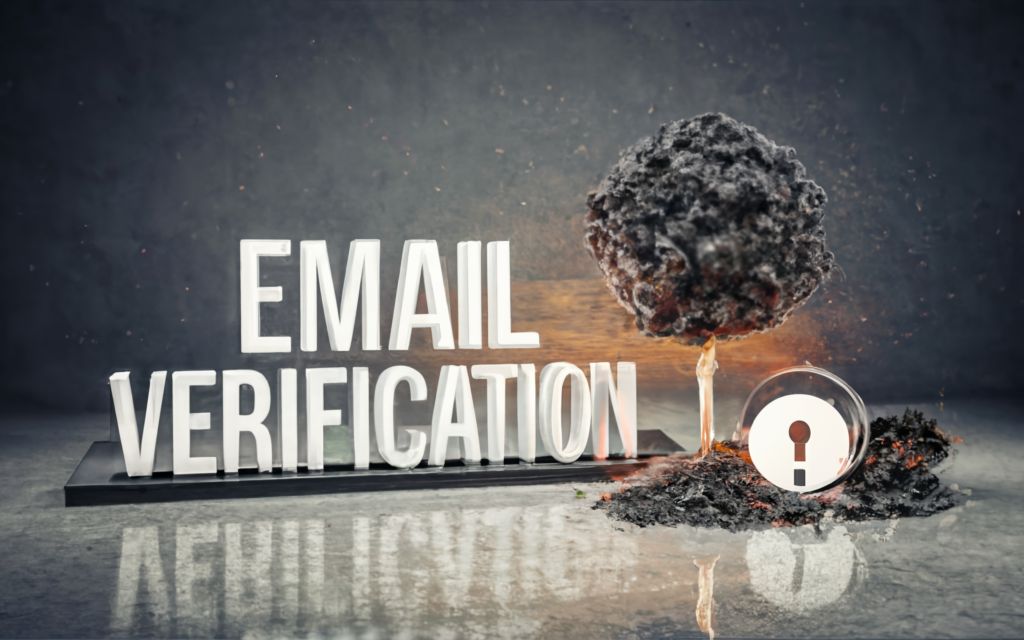
Confirming vs. Verifying Data
Email addresses aren’t the only data that needs verification. Whether it’s transactions, legal documents, logins, or other information, validation is critical across industries. Understanding subtleties between confirming and verifying data enables smarter processes.
Examples of Confirming vs Verifying Data
Confirming and verifying data look different depending on the scenario. Here are some examples across contexts:
Online Financial Transactions
Banks verify account owners via required ID checks, passwords, or multifactor authentication. Once verified, they confirm transaction requests by sending confirmation codes or calling to confirm large transfers.
Legal Contracts
Lawyers verify signees by checking government IDs and cross-referencing identities. They also confirm understanding of terms through signed notices.
Software Logins
Login systems verify users by checking credentials like usernames and passwords. For heightened security, some also confirm logins via secondary codes sent to devices.
Medical Records
Doctors verify patients via information like Social Security numbers and dates of birth. Requested records may be confirmed through release consent forms.
Online Forms
Website forms verify email validity via automated checks before submission. Users then confirm their addresses by clicking confirmation links.
Scientific Research
Experiments go through rigorous verification of results and peer review. Other researchers confirm findings by replicating studies and outcomes.
Chain of Custody
Law enforcement verifies evidence like DNA samples have not been tampered with by confirming without a doubt proper protocols were followed at each step.
While specifics vary, common patterns emerge around verifying details upfront and then confirming critical data via redundancy.
Exceptions to Standard Verification Practices
In most contexts, upfront verification is standard practice before accepting data as true. However, exceptions exist:
Emergency Scenarios
In medical, firefighting, or hazardous emergencies, responders may need to act quickly based on reports without full verification.
Time Sensitivity
In time-sensitive scenarios like system failures, quick action might be taken on limited info if delays would cause harm.
Trusted Sources
Data from highly trusted sources like government agencies may be accepted with less rigorous verification.
Sample Testing
Full verification may be replaced by sampling in cases where it’s infeasible to verify every datapoint.
Limited Access
Lack of access to sensitive data like medical records may prevent comprehensive verification.
Qualified Assumptions
In analysis or projections, certain assumptions may be made based on expertise versus verified data points.
While ideal, full verification is not universally required – context matters. But exceptions warrant careful consideration of associated risks.
Weigh the Tradeoffs of Verifying vs Confirming
Deciding on ideal validation processes requires weighing key factors:
Sensitivity of Data
More critical data warrants more stringent verification – e.g financial vs mailing list data.
Access Limitations
If direct access to data is constrained, confirmation provides indirect proof points.
Resources Required
Time, technology, and staffing costs of extensive verification must be feasible.
Business Needs
Level of accuracy needed to meet goals and use case.
Privacy Regulations
Rules like GDPR limit how consumer data like emails can be investigated.
User Experience Impact
Will heavy verification processes impede users and hurt satisfaction?
There are always tradeoffs to manage. Analyze your needs, constraints, and risks to find the right balance for each situation.
Ensuring data quality through intelligent validation techniques is just as crucial as verifying email addresses. Understand the tools available – from initial verification to redundant confirming – to give your stakeholders and customers confidence in the truthfulness of information.
Email Confirmation and Verification Best Practices
Approaching email verification intelligently takes your outreach to the next level. Here are some top tips for confirming and verifying your lists:
Prevent Issues by Verifying Before Sending
The number one best practice is verifying your contact list before sending any email campaign or major newsletter. Pre-verification:
- Lowers your complaint, bounce, and unsubscribe rates
- Maximizes inbox placement for better open rates
- Allows relevant segmentation and personalization
- Builds trust and engagement with recipients over time
Don’t skip this vital step.
Regularly Schedule Verification
Verifying your email list should not be a one-time event. Set up regular verification cadences such as:
- Monthly checks for active marketing lists
- Quarterly verification for nurture tracks
- Weekly for rapidly changing outreach lists
- Before each campaign send as a safety net
Consistent list hygiene prevents deliverability issues.
Leverage Automation for Simplicity
Nobody wants to manually verify thousands of addresses. Leverage automated verification tools like:
- Native integrations in your ESP or CRM
- Email verification APIs
- Third-party plugins and connectors
Automated solutions make verification smooth and painless at scale.
Take a Layered Verification Approach
For maximum accuracy, perform multiple validation checks combining:
- Syntax verification
- DNS and domain record lookups
- Mail server ping tests
- Global inbox databases
- Historical behavioral analysis
- Manual recipient confirmation
Layered verification from different angles gives you precision.
Confirm Opt-In for Personalized Messaging
If sending highly customized 1:1 emails, go beyond verification and confirm opt-in consent so you know real engaged people are receiving relevant content.
Tap Provider-Specific Verification Methods
Use tips in this guide to verify common inboxes through provider-specific techniques for platforms like Gmail, Outlook, LinkedIn, and others.
Verify Disposable and Role Emails Carefully
Take extra steps to confirm disposable emails and role-based addresses that pass verification but may not belong to real users.
Document Verification Policies and Procedures
Detail your verification workflows, tools, cadence, and processes in your email strategy documentation for consistency across your team.
Adjust Your Process as Your Needs Change
Evolve your verification process as your list size, sending frequency, resources, and business requirements change over time.
Verify New Lists from Third-Party Sources
Treat purchased, rented, or partner email lists with scrutiny as you have no visibility into their accuracy. Pre-verify any external contacts.
Smart email verification processes demonstrate respect for your recipients, grow your sender reputation, and set you up for email success. Follow these tips to keep your list primed for stellar deliverability.
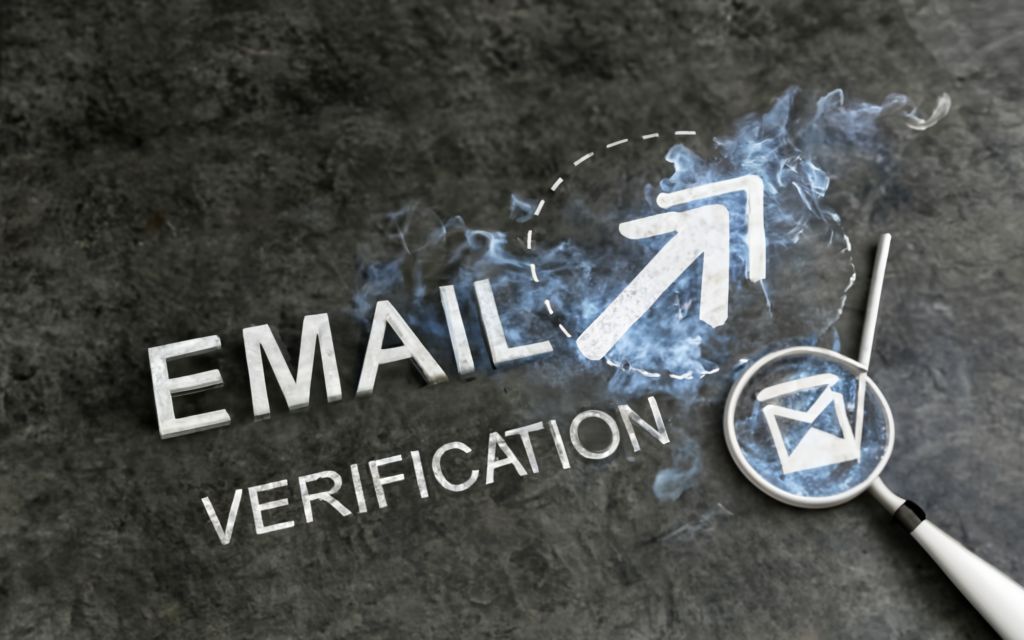
Key Takeaways
Verifying and confirming email addresses are foundational practices for marketers and developers handling contact data. Key lessons include:
- Verification focuses on technical accuracy – checking formatting, server setup, and domain validity. Confirmation goes further to get proof a real person owns the address.
- Verify your lists before major email sends to maximize deliverability, open rates, and sender reputation. Confirm opt-in for personalized outreach.
- Regularly verify your database to catch natural decay and keep email metrics strong. Leverage automation to simplify the process at scale.
- Validate without sending emails using tools for bulk verification, API integration, syntax checks, reverse lookups, ping tests, and more.
- Apply provider-specific techniques to verify common emails from LinkedIn, Outlook, Gmail, and other major platforms.
- For developers, tap pre-built APIs and integrations to programmatically verify contacts and maintain clean email lists.
- Confirmation and verification are equally crucial for transactions, documents, research, and other sensitive data – not just marketing emails.
Following email verification and confirmation best practices makes your outreach more trusted, targeted, and impactful. Take a layered approach across tools and techniques to confidently connect with genuine contacts.
Frequently Asked Questions
Why is email verification important?
Email verification improves your sender reputation and inbox placement by removing invalid contacts that would otherwise bounce or get marked as spam. It keeps your metrics like open and clickthrough rates accurate and your list primed for engagement.
When should you verify email addresses?
Verify your list before major email sends, after noticing deliverability declines, when importing new contacts, and on an ongoing basis monthly or quarterly. Time verification to keep your list constantly clean.
How do you verify an email address without sending emails?
Use syntax checks, domain validation, mail server pings, global databases, reverse lookups, and specialized bulk verification services. Multiple layers give the most accurate results.
What’s the difference between email verification and confirmation?
Verification focuses on technical accuracy by checking formatting, servers, etc. Confirmation goes further and actually proves a real person owns the address through double opt-in and engagement tracking.
How do you verify a LinkedIn or Gmail address?
For LinkedIn, match names, companies, and positions to member profiles. For Gmail, use bulk verification tools, check names, and ping Google’s email servers directly. Apply provider-specific logic.
Can you verify email addresses through an API?
Yes, email verification APIs from providers like ZeroBounce, NeverBounce, Mailgun, and others allow automating verification from within your codebase for scalable solutions.
What should you look for when selecting an email verification provider?
Look for accuracy, deliverability intelligence, flexible APIs and integrations, bulk verification at scale, global contact databases, and affordable pricing for your use case.
How often should you verify and update your list?
Ideally verify quarterly or monthly, but adjust based on list size, volatility, your send volume, and resources. Perform additional verifications before big email sends.
What are some best practices for email verification?
Verify regularly, leverage automation, take a layered approach across different tools, follow provider-specific tips, document procedures, adjust over time, and confirm opt-in consent when needed.
Email verification does not need to be a struggle. Following core best practices makes it fast, efficient, and error-proof.

